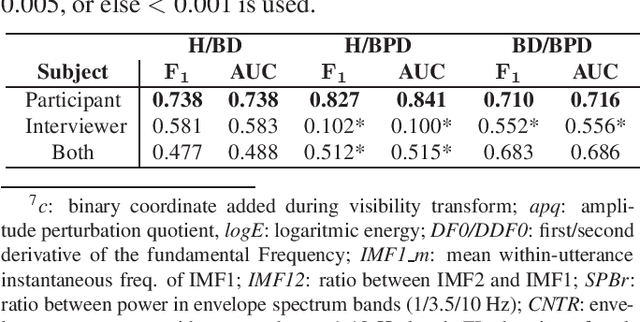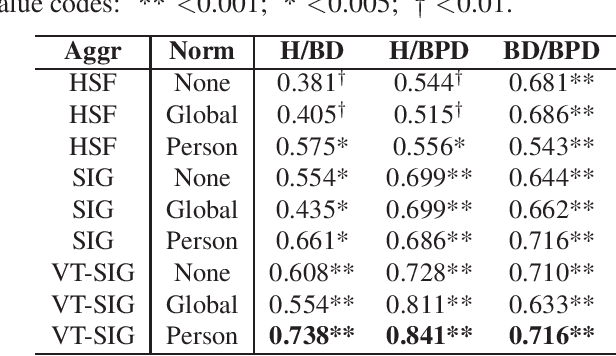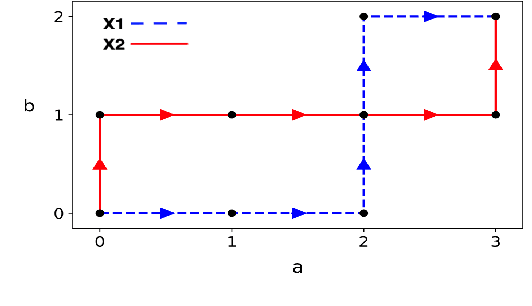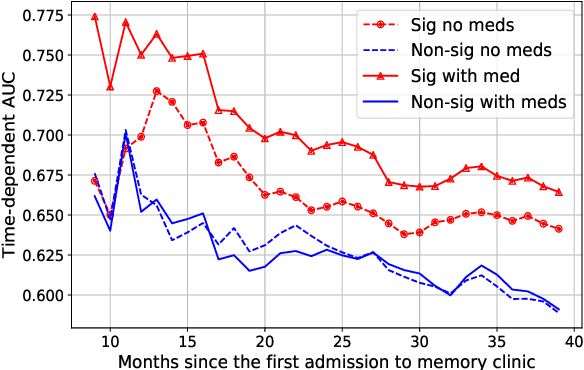Nemanja Vaci
Modelling Paralinguistic Properties in Conversational Speech to Detect Bipolar Disorder and Borderline Personality Disorder
Feb 18, 2021



Abstract:Bipolar disorder (BD) and borderline personality disorder (BPD) are two chronic mental health conditions that clinicians find challenging to distinguish based on clinical interviews, due to their overlapping symptoms. In this work, we investigate the automatic detection of these two conditions by modelling both verbal and non-verbal cues in a set of interviews. We propose a new approach of modelling short-term features with visibility-signature transform, and compare it with widely used high-level statistical functions. We demonstrate the superior performance of our proposed signature-based model. Furthermore, we show the role of different sets of features in characterising BD and BPD.
An efficient representation of chronological events in medical texts
Oct 24, 2020



Abstract:In this work we addressed the problem of capturing sequential information contained in longitudinal electronic health records (EHRs). Clinical notes, which is a particular type of EHR data, are a rich source of information and practitioners often develop clever solutions how to maximise the sequential information contained in free-texts. We proposed a systematic methodology for learning from chronological events available in clinical notes. The proposed methodological {\it path signature} framework creates a non-parametric hierarchical representation of sequential events of any type and can be used as features for downstream statistical learning tasks. The methodology was developed and externally validated using the largest in the UK secondary care mental health EHR data on a specific task of predicting survival risk of patients diagnosed with Alzheimer's disease. The signature-based model was compared to a common survival random forest model. Our results showed a 15.4$\%$ increase of risk prediction AUC at the time point of 20 months after the first admission to a specialist memory clinic and the signature method outperformed the baseline mixed-effects model by 13.2 $\%$.
Med7: a transferable clinical natural language processing model for electronic health records
Mar 03, 2020



Abstract:The field of clinical natural language processing has been advanced significantly since the introduction of deep learning models. The self-supervised representation learning and the transfer learning paradigm became the methods of choice in many natural language processing application, in particular in the settings with the dearth of high quality manually annotated data. Electronic health record systems are ubiquitous and the majority of patients' data are now being collected electronically and in particular in the form of free text. Identification of medical concepts and information extraction is a challenging task, yet important ingredient for parsing unstructured data into structured and tabulated format for downstream analytical tasks. In this work we introduced a named-entity recognition model for clinical natural language processing. The model is trained to recognise seven categories: drug names, route, frequency, dosage, strength, form, duration. The model was first self-supervisedly pre-trained by predicting the next word, using a collection of 2 million free-text patients' records from MIMIC-III corpora and then fine-tuned on the named-entity recognition task. The model achieved a lenient (strict) micro-averaged F1 score of 0.957 (0.893) across all seven categories. Additionally, we evaluated the transferability of the developed model using the data from the Intensive Care Unit in the US to secondary care mental health records (CRIS) in the UK. A direct application of the trained NER model to CRIS data resulted in reduced performance of F1=0.762, however after fine-tuning on a small sample from CRIS, the model achieved a reasonable performance of F1=0.944. This demonstrated that despite a close similarity between the data sets and the NER tasks, it is essential to fine-tune on the target domain data in order to achieve more accurate results.
 Add to Chrome
Add to Chrome Add to Firefox
Add to Firefox Add to Edge
Add to Edge